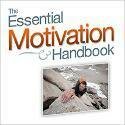Buddhist Meditation - Discover How 7 Easy Steps of Basic Meditation Can Unlock The Doors of Bliss & Relaxation For You!
According to Wikipedia - "Buddhist meditation encompasses a variety of meditation techniques that develop mindfulness, concentration, tranquility and insight."Basic Buddhist meditation is quite easy to learn and does not require any special gadgets or equipment. All it needs is some willpower and the desire for self-transformation and awakening.
The benefits of meditation are numerous and they can be easily achieved with regular practice. Here is an easy-to-do Buddhism meditation technique which can be done daily to achieve deep relaxation, stress-relief and other numerous benefits of meditation.
7 Easy Steps of basic Buddhist Meditation Technique
1) Sit comfortably. You can take a seated posture on a soft cushion or a pillow. Sit in an erect posture so that you can meditate in a comfortable state and the breathing can also be deep and relaxed.2) Meditation surroundings and Outfit. In order to make the most out of your meditation session - look for a quite place, outdoor space or room to meditate. As a beginner, you should avoid all possible distractions such as TV, phone, etc. while meditation.
For advanced meditators, these are not a problem at all. As awareness and mindfulness grow through the practice of Buddhist meditation techniques, it is possible to be in a meditative state irrespective of the external factors.
Choose an outfit that keeps you adequately warm or cool. It should be comfortable enough, so that you can meditate free of any physical distractions.
3) Meditation Posture. You can set in the cross-legged posture on the cushion. Most people are comfortable in that position, but you can also meditate sitting on a chair if sitting cross-legged on the ground is uncomfortable to you.
Make sure to keep your spine erect. Sit in an upright posture whether you take the back support or not. Keep your feet firmly on the ground.
4) Position your hands comfortably. You can keep your hands on the knees, one on the top of the other, with palms facing upwards. There is no particular way of doing this. Just try to keep your hands in a way that enhances your comfort and relaxation, so that you can meditate deeply.
5) Be aware of your Breath. Now you can close your eyes. Take a few deep breaths and begin counting your breaths gently from 1 to 10. Count one inhalation and one exhalation as the count 1, next inhalation and exhalation as count 2 and so on till the count of 10. If you miss a count, repeat from 1 again.
The point is to be aware of your ingoing and outgoing breath. This shall develop mindfulness and allow your mind to come to the present. Gradually the thoughts also shall slow down. You shall achieve deep relaxation and greater consciousness.
After a few days of practice, you can gradually leave off this counting of the breath and just focus directly on the movement of the breath. Witnessing the thoughts and developing awareness are the goals of Buddhist meditation techniques.
6) Watch your thoughts pass by. As you place your awareness on the ingoing and outgoing breath, keep an approach of being a witness towards the thoughts that are passing by in your mind.
In case you get carried off with a particular thought, come back to counting your breath as soon as you realize that you have wandered off. Keep a similar attitude towards the sounds that are arising nearby and the body sensations that arise during the course of meditation practice.
As you practice this witnessing of the thoughts, you shall realize that you are separate from the thoughts and the mind is just an instrument. You shall achieve great mastery over your thoughts and emotions, rather than being driven by them. This freedom from incessant thoughts gives rise to a great feeling of bliss and calmness.
7) How long to meditate? A meditation session of 10 to 20 minutes is ideal for a beginner. You can increase the meditation time gradually and add a few sessions in the day as per your convenience.
You can use a meditation timer or alarm with soft music to know when to end the meditation session. Looking at the clock during meditation can be distracting. Stretch your feet, toes and legs at the end of the meditation session before you get up.
Additional Resources on Buddhist Meditation, Mindfulness and Anapanasati Meditation
Audio DharmaSeries of talks on the key elements of Buddhist meditation practice offered by Gil Fronsdal.

